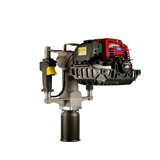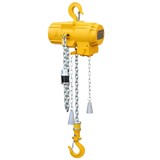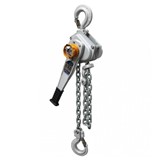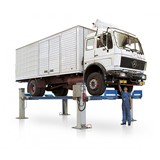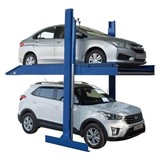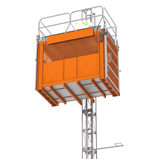Find the best 4 post hoist for your needs in Australia. Learn about pricing, types, installation, maintenance, and financing for optimal buying decisions.
Key Takeaways
- Average Cost in Australia: A quality 4 post hoist typically costs between $4,000 and $9,000, depending on lifting capacity, brand, and added features.
- Types Available: Choose from standard car storage lifts, alignment hoists, and heavy-duty commercial hoists ranging from 3,000kg to over 8,000kg capacity.
- Operation: These hoists provide simple drive-on access and hydraulic or electro-hydraulic lifting, making them suitable for storage or undercarriage work.
- Maintenance: Routine inspection every 3–6 months, plus servicing of hydraulics and cables, can extend lifespan to 10–15 years.
- Compliance: Must meet AS/NZS 1418 and be WorkSafe registered in your state.
- Warranties: Most suppliers offer 1 to 3 years warranty on parts and labour.
- Financing: Equipment loans or lease options available with repayments from $100/week for SMEs through Australian lenders.
Introduction
If you're in the automotive service or storage industry, investing in a 4 post hoist can significantly boost your productivity, capacity, and vehicle turnaround times. Whether you're expanding your home garage, running a busy workshop, or managing a fleet, choosing the right hoist is crucial.
This guide will walk you through the types, pricing, specifications, compliance regulations, financing options, and more—all tailored for the Australian market.
Types and Prices of 4 Post Hoists in Australia
4 post hoists are widely used in both home garages and commercial workshops due to their stability, ease of use, and ability to lift heavy vehicles. These hoists come in a range of configurations to suit different operational needs, lifting capacities, and budgets. Below is a detailed breakdown of the main types, their uses, capacities, and price ranges in Australia:
- Standard Parking/Storage Hoists
- Best for: Long-term vehicle storage, ideal for car enthusiasts, collectors, or garages with limited space. These hoists offer a convenient way to store multiple vehicles in a smaller footprint.
- Lifting capacity: Typically between 3,000 to 4,000kg, making them suitable for most standard cars and smaller vehicles.
- Price range: $4,000 to $6,000 depending on features such as platform length, construction quality, and additional functionalities.
- Alignment Hoists
- Best for: Automotive workshops that specialise in tyre changes, wheel alignments, and suspension repairs. These hoists come equipped with turntables and slip plates, making them an essential tool for precision alignment tasks.
- Lifting capacity: Ranges from 4,000 to 6,000kg, typically adequate for most passenger vehicles and light commercial vehicles.
- Price range: $6,000 to $8,000, with higher prices reflecting advanced features such as electronic turntable controls and built-in alignment systems.
- Heavy-Duty 4 Post Hoists
- Best for: Commercial vehicle workshops or any facility requiring heavy-duty lifting for trucks, vans, or buses. These hoists are designed to handle higher capacities and are built to last with reinforced construction.
- Lifting capacity: Typically ranges from 6,000 to 8,000+kg, offering the power required for larger vehicles and even some light trucks. Some models can handle up to 10,000kg or more, depending on specific requirements.
- Price range: From $7,000 to over $12,000, depending on the lifting capacity, platform size, and added features such as hydraulic power units and digital controls. Heavy-duty hoists may also require more complex installation processes, which can increase the overall cost.
- Portable 4 Post Hoists
- Best for: Small workshops or mobile operations where flexibility and portability are important. These hoists feature casters or wheels that make it easy to move the unit around as needed. They're ideal for lighter vehicles or less frequent use.
- Lifting capacity: Generally up to 3,000kg, suitable for cars, motorcycles, and light trucks.
- Price range: $3,500 to $5,000, offering a more affordable solution for mobile repair units or limited-space garages.
Additional Costs:
Installation and delivery fees are often not included in the base price and can vary depending on your location and installation complexity. Generally, these additional fees can range from $500 to $1,500 or more, particularly if the hoist needs to be installed in a challenging location or if significant electrical or structural modifications are required.
Maintenance and Spare Parts
Proper maintenance is key to ensuring long-term performance and safety.
Maintenance Schedule
Monthly checks should include visual inspection of cables, pulleys, and fluid levels. Every 3 to 6 months, you should lubricate sheaves and rollers, and inspect hydraulic hoses and cable tension. An annual comprehensive service is recommended to maintain compliance and mechanical integrity.
Common Replacement Parts
- Hydraulic cylinders usually cost between $500 and $1,200
- Safety locks and cables range from $100 to $300 each
- Pulleys and rollers cost around $80 to $250
Always use OEM (Original Equipment Manufacturer) parts to preserve warranty coverage and ensure the equipment remains compliant with Australian standards.
Compliance and Certification in Australia
In Australia, 4 post hoists are considered high-risk mechanical equipment and must meet specific national standards.
Compliance Standards
- AS 1418.9: Cranes, hoists and winches - Vehicle hoists
- AS/NZS 2550.9: Safe use of vehicle hoists
- State-based WorkSafe registrations for higher-capacity models
- WorkCover or WorkSafe certification tags (often provided by the supplier)
Installer Requirements
Installation should only be performed by a licensed professional, preferably one holding a High Risk Work Licence. For commercial premises, you may also require engineering sign-off or council approval, depending on your local authority's building regulations.
Financing Your 4 Post Hoist
There are several financing solutions available for businesses seeking to acquire a 4 post hoist without large upfront costs.
Chattel Mortgage
- This allows you to own the equipment from day one while making regular repayments.
Finance Lease
- The hoist remains under lender ownership for the duration of the lease, with the option to purchase it at the end of the term.
Rental Agreements
- Usually include full maintenance and servicing in the rental cost, suitable for high-turnover workshops.
Monthly repayments can start from around $100 to $200 per week for eligible businesses, depending on lender terms, credit rating, and the price of the equipment. Popular Australian lenders include Finlease, Metro Equipment Finance, and Judo Bank.
Warranty Information
Australian suppliers typically provide warranties of 1 to 3 years on parts and between 12 to 24 months on labour. Some may offer extended warranties at an additional cost or as part of a maintenance agreement.
It’s important to clarify the following with your supplier:
- Whether on-site service is included during the warranty period
- If OEM replacement parts are covered
- Whether the warranty is transferable if the equipment is sold
Frequently Asked Questions
Can I install a 4 post hoist in a residential garage?
- Yes. You will need at least 3 metres of ceiling clearance and a solid concrete floor with a minimum depth of 100mm. Portable models are a good option for residential garages.
Do I need council approval to install one?
- In most residential settings, council approval is not required unless structural modifications are being made. However, in commercial environments, approvals or engineering certificates may be required.
How long does installation take?
- A standard 4 post hoist can usually be installed by professionals within 3 to 6 hours, depending on the model and site conditions.
What’s the difference between 2 post and 4 post hoists?
- 2 post hoists provide better underbody access for repairs but require precise vehicle positioning. 4 post hoists are easier to use, more stable, and better suited for storage or heavier vehicles.
How long does a 4 post hoist last?
- With routine maintenance and correct usage, a quality hoist can last 10 to 15 years or more.
Final Thoughts
Purchasing a 4 post hoist is a valuable investment for garages, workshops, and fleet managers. By understanding the available options, ensuring compliance, and evaluating maintenance, warranty, and finance arrangements, you can make an informed and confident decision. Always choose a reputable Australian supplier who understands local standards and offers reliable post-sale support.


-160x160-state_article-rel-cat.png)
